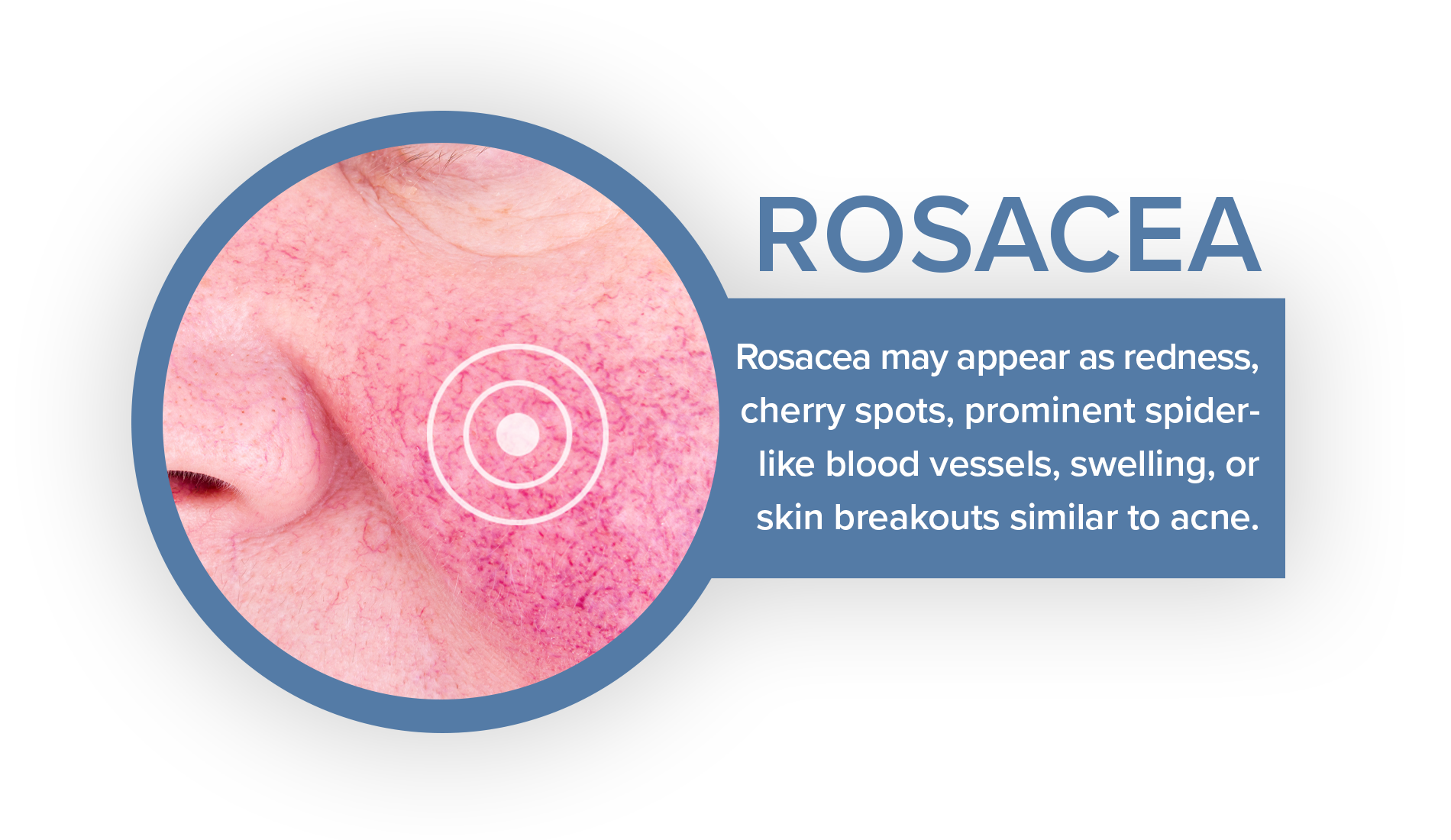Rosacea is a chronic skin condition involving inflammation of the cheeks, nose, chin, forehead, or eyelids. It may appear as redness, cherry spots, prominent spider-like blood vessels, swelling, or skin breakouts similar to acne.
The cause of rosacea is unknown. However, you are more likely to develop this problematic skin condition if you are fair-skinned, blush easily, are a woman (however, men with the condition are usually more severely affected) and are between the ages of 30 and 50.
There is no known cure for rosacea. The goal is to identify and avoid possible triggers such as sun exposure, prolonged exertion in hot weather, stress, spicy foods, alcohol, and hot beverages. Other potential triggers may include wind, hot baths, cold weather, certain skin products, exercise and other factors but typically vary from person to person.
Oral antibiotics (such as tetracycline) or topical treatments (such as metronidazole or Metrogel) may control skin eruptions. Other medications such as isoretinol or Accutane are stronger alternatives that can be used in severe cases.
Unfortunately, medical therapy can cause significant side effects, be costly and not give patients desired results. Through the use of non-invasive laser technology, it is possible to treat mild to severe rosacea and redness with minimal side effects, pain, or downtime. Laser or light therapy can be extremely effective at reducing redness, visible vessels, shrinking pore size which is caused by inflammation and evening out skin tone. The number of treatments required and frequency of follow-up visits vary depending on the severity of the condition, however, many patients have seen noticeable improvement after even one treatment.



